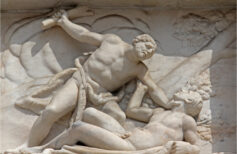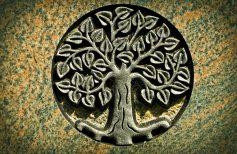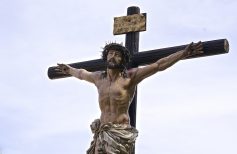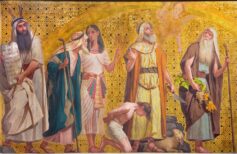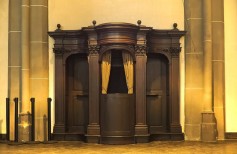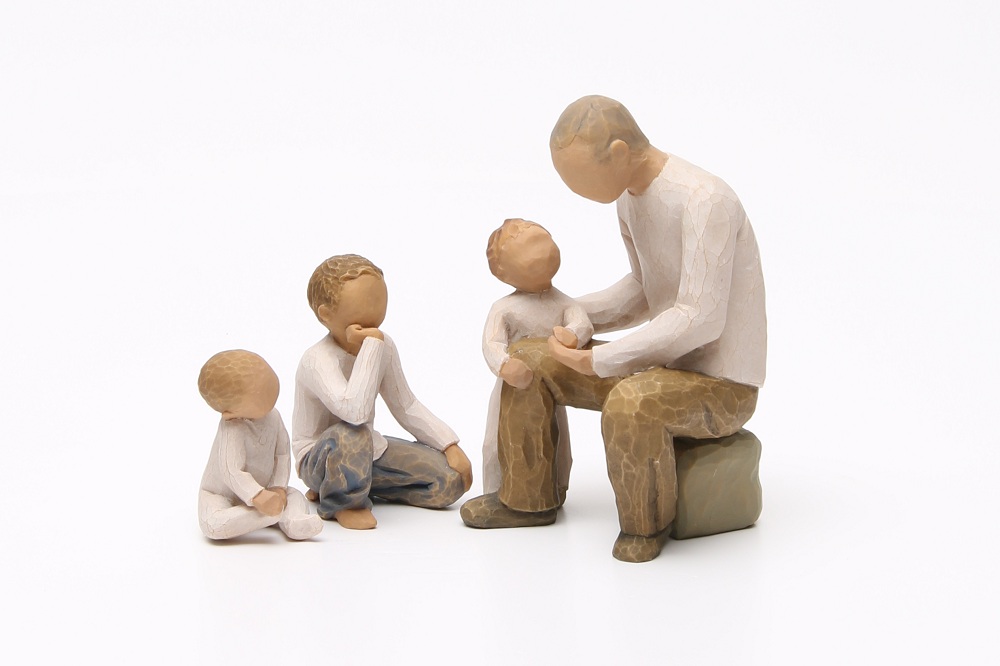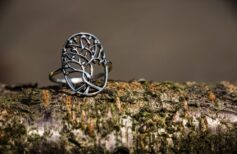Who does not know the story of Adam and Eve, the first man and the first woman? But are we really sure that we know it properly? Let’s remember the history of all the stories together.
Contents
Eve and Adam are considered by Catholics to be the progenitors of all mankind. Their story has been told to us since we were children, and it is beautiful and terrible because it tells of the immense love of God, who chose to create these two special creatures to give them the gift of the wonderful world just sprung from his hands, but he tells also of original sin and of how the first man and the first woman disappointed their Father, deserving to be expelled from his Paradise.
But the story of Adam and Eve hides in itself much deeper meanings, which certainly deserve closer scrutiny. Just think of the fact that accepting their existence means recognising that all humanity descends from the same couple, and therefore that we are all one big family. A not indifferent concept, especially in times when love, brotherhood and mercy are constantly questioned.
It is, therefore, worth pausing for a moment on this ancient and fascinating history, on the meanings it hides, and which have been the basis of Catholic doctrine since its origins. Concepts such as original sin and the apple of sin have conditioned and regulated the lives of countless men and women over the millennia, and even today we live the legacy of that guilt, of that stigma that has marked humanity as a whole, and that only the sacrifice of Jesus could call into question.
The creation of Adam and Eve
The true story of Adam and Eve is told in the Bible, and more specifically in the book of Genesis.

This book describes the days of Creation when God wanted to give rise to the world we know and all that populates it. Within five days, He created the sky, the earth, the light, the stars, all the fish, the birds and the animals.
On the sixth day, he created Man.
God said, ‘Let us make man in our image, after our likeness: and let them have dominion over the fish of the sea, and over the birds of the sky, and over the cattle, and over the entire earth, and over every creeping thing that crawls the earth.’ God created man in his own image. In God’s image he created him; male and female he created them. God blessed them and said to them: “Be fruitful and multiply, fill the earth; subdue it and rule over the fish of the sea and the birds of the sky and over every living thing that creeps on the earth” ; (Genesis 1:26-28)
However, there is a second version of this same episode in the Bible:
The man gave names to all cattle, and the birds of the sky, and to every animal of the field, but for man, there was not found a helper suitable for him. Yahweh God caused a deep sleep to fall on the man, and he slept, and he took one of his ribs and closed up the flesh in its place. Then the Lord God made a woman from the rib he had taken out of the man, and he brought her to the man. (Genesis 2:20-22)
These two versions are defined, respectively, Fonte Sacerdotale and Fonte Jahvista, and are linked to the documentary or documentary hypothesis, formulated by the German biblical scholar Julius Wellhausen, according to which the first five books of the Bible, the so-called Pentateuch (Torah for the Jews), or Genesis, Exodus, Leviticus, Numbers and Deuteronomy, were not written only by Moses, but by four probable authors, the initials of the names of which make up the initials JEDP.
As we can see, the two creation accounts of the first man and the first woman present some substantial differences. In the first, God created Adam and Eve at the same time, both in his own image, and made them masters of the earthly Paradise. In the second, however, Adam was created first, and God only gave him dominion over the things and animals he had created. The woman came later. Of course, this is not the place to deepen these two points of view, but the implications that the two different interpretations have had in the history of the Church and of humanity, especially concerning the relationship between men and women, are evident.
The story of Adam and Eve for children
Beyond the academic interpretations and studies of illustrious biblical scholars, how could we tell the story of Adam and Eve simply? For example, if we were to tell it to children how could we proceed? What must emerge in the eyes of the little ones of this story will be the great love of God, who created a wonderful world to give it to men and women. It will be essential that children understand that since everything around them is the fruit of that love, they must respect and protect it, enjoy it and never, never take it for granted, as too often happens. Then it will certainly be useful to make them understand the seriousness of Adam and Eve’s disobedience, who ate the apple despite God having ordered them not to, yet leaving them free to feed on all the other beautiful and tasty fruits that abounded in the Garden of Eden. To underline this point it may be useful to draw a comparison with the disobedience of the children themselves, which escape the duties and recommendations of their parents. Duties and recommendations always pronounced only for their own good. Again, it will be important to suggest to them the concept of free will: God left Adam and Eve the choice to do what they wanted, even the choice to love him or not. He didn’t force them to do anything, everything he did for them was a wonderful gift, and despite this, they disappointed him, with their ingratitude. The story could go something like this:
God is so good that he decided one day to create a beautiful garden. He filled it with plants, flowers, animals of all kinds, and above it spread the sky, with the sun, the moon, the stars. When he had finished, he created the first man, Adam, and the first woman, Eve, and he wanted to give them this earthly Paradise. Adam and Eve would be free to go where they wanted, in that world where there was no pain, disease, death, and to eat all the fruits that grew on the trees of the garden, except the apples of the tree that stood in the centre of the latter.
Despite God’s recommendations, Eve allowed herself to be tempted by an evil serpent, who told her that the fruits of that great tree would allow her to understand the difference between good and evil. Eve took a fruit from the forbidden tree, ate it and offered it to Adam.
God quickly discovered their disobedience, and he suffered greatly. He had done everything for them, created a paradise and gave it without asking for anything in return. As a punishment, he cast them out of the earthly Paradise and condemned them and all their descendants to pain and death.

Free will: what it is, what it means
What is free will? What implications does it have for a man’s life in general, and for the Christian’s in particular?
Adam and Eve: the story of the apple and original sin
The story of the apple, the forbidden fruit that would make Adam and Eve equal to God, giving them the knowledge of good and evil is not just a story for children. Indeed, it is the basis of the Catholic religion. In fact, the consequence of original sin was the fall of man, the rupture of the tacit covenant between him and God, the effects of which have had repercussions on all of humanity for millennia. It is from that single act of disobedience that all human evils originate. Before it, man was perfect, immune from disease and injury, immortal, happy. This action stems from the will of man to be able to decide for himself what good is, what evil is, instead of relying on the infinite wisdom and infinite love of God.
The story of original sin, from the serpent’s temptation to Eve’s gesture of taking the apple from the tree and offering it to Adam, is impregnated with references to countless previous sacred tales. Interestingly, the words of the tempting serpent are sufficient to instil in the first woman the seed of doubt, the belief that God’s order not to eat the fruit of the tree was unjust. Above all, it is sobering that the serpent’s promise, which tells Eve that by eating the forbidden apple she and Adam will gain knowledge of good and evil, practically becoming like God, is so compelling.
Adam and Eve expelled from paradise
After the apple has been picked and tasted, however, the first and only thing that Adam and Eve become aware of was their own nakedness. Shame was the first negative feeling experienced by the first man and the first woman, an instant after their fall.
Immediately discovering disobedience, God summons the three guilty, who try to exonerate themselves by blaming each other. God’s punishment strikes them all, first the serpent, who is cursed, then the woman, Eve, condemned to the sufferings of childbirth and to be subjected to the man, finally Adam, condemned to have to draw the fruits from the earth with effort and sweat, who hitherto had been lavish and generous with him.

Finally, and this is certainly the worst evil derived from this reckless act, God condemns man and woman, and with them all their descendants, to physical death, where before they were immortal. It will take thousands of years, and the advent of Jesus Christ, for this terrible rupture to know the hope of a reconciliation. In Jesus, the children of Adam know the possibility of redemption, the mirage of eternal life at the end of time, and only for those who know how to deserve it.
Who were the children of Adam and Eve
Once expelled from Eden, Adam and Eve had several children, according to tradition from 14 to 140. The only three mentioned in the Bible, however, are Cain, Abel and Seth. Cain married Abel’s twin sister Calmana, Abel Cain’s twin sister Deborah. Later, on the death of Abel, Cain, his murderer, married his sister Awan, from whom he fathered a son, Enoch. Seth married his sister Azura, who gave birth to Enos, from whose offspring Noah and his children will be born. The descendants of Cain, on the other hand, became nomadic cattle ranchers and learned the art of forging metals, distinguishing themselves however for the violence and the practice of polygamy.


